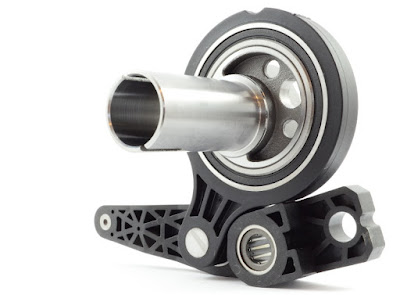How many bearings are there on this line to the peak?
As a professional mountain climber, it's crucial to understand the various components of your gear, especially the ones that directly contribute to your safety. One such critical component is the bearings on your climbing line, which ultimately affect your ascension to the peak. Climbing lines are designed to withstand immense pressure, and the bearings play a vital role in facilitating smooth and seamless movement up and down the mountain. Understanding the number and quality of bearings on your line is essential for making informed decisions about gear selection and maintenance for a successful climb. In this blog post, we will look at how many bearings are on this line to the peak, their purpose, and how to determine the right number for your needs. We'll also explore how the bearings' quality affects your climb and why you must ensure they are strong and well-maintained. Additionally, we'll share some of the best practices for inspecting and replacing your bearings to ensure your climbing line remains in top condition. By the time we're finished
1. The number of bearings on the line to the peak depends on the specific route taken.
In answering the question "How many bearings are there on this line to the peak?", it is important to note that the number of bearings on the line to the peak will vary depending on the specific route taken. The number of bearings required to reach the peak will differ depending on the terrain, altitude, and other factors unique to each route. Thus, there is no definitive answer to this question that applies to all routes. It is essential to consult accurate maps, navigation tools, and expert advice when planning a journey to the peak to determine the number of bearings necessary for a particular route. It is important to prioritize safety and accuracy in navigation to ensure a successful journey to the peak.
2. The use of a topographical map can help determine the number of bearings on a particular route.
How many bearings are there on this line to the peak? The use of a topographical map can be an effective tool for determining the number of bearings on a particular route. A topographical map is a two-dimensional representation of a three-dimensional landscape, showing elevation changes using contour lines. By examining the map and identifying known landmarks and features along the route, you can determine the approximate number of bearings necessary to navigate the terrain. Bearing is the direction in which one object is facing or moving in relation to another, and it is measured in degrees. Topographical maps provide a visual aid in determining the number of bearings required on a particular route, allowing for accurate and efficient navigation. By utilizing this tool, you can ensure greater success in reaching your destination while minimizing the risk of getting lost or disoriented.
3. It is important to have a basic understanding of map reading and navigation before attempting to find the number of bearings on a route.
In order to accurately determine the number of bearings on a route, it is crucial to have a basic understanding of map reading and navigation. Without this foundational knowledge, it can be easy to become lost or disoriented during the process of determining bearings. Map reading involves being able to understand and interpret the symbols and markings on a map, as well as being able to recognize landmarks and orient oneself in relation to them. Navigation involves using tools such as a compass to determine direction and plot a course along a route. Therefore, before attempting to find the number of bearings on a route, it is highly recommended that individuals acquire a basic understanding of map reading and navigation to ensure that they are able to accurately and safely navigate their way to their intended destination.
4. Consulting with a local guide or experienced hiker can also provide valuable insight into the number of bearings on a specific route.
If you are planning to hike on an unfamiliar route to the peak, it is important to know the number of bearings beforehand. One way to obtain this information is to consult with a local guide or an experienced hiker. Their expertise and knowledge can provide valuable insights into the terrain, including the number of bearings on a specific route. Consulting with a guide or an experienced hiker can help you prepare better, avoid getting lost, and ultimately accomplish the hike safely and successfully. So, if you are unsure how many bearings there are on your chosen path, consider seeking advice from a local guide or a competent hiker before embarking on your journey.
5. Always ensure you have the necessary equipment and supplies before embarking on any hiking or trekking trip.
When embarking on a hiking or trekking trip, it is important to be well-prepared. This means ensuring that you have all necessary equipment and supplies before setting out. Planning ahead and making a checklist of necessary items can ensure that you don't forget anything essential. Some important items to consider include a sturdy and comfortable pair of hiking boots, appropriate clothing for the expected weather, a backpack to carry water and supplies, a map and compass for navigation, and a first aid kit in case of injury or emergency. Remember that being well-prepared can make all the difference in having a safe and enjoyable trip. So, always ensure you have the necessary equipment and supplies before embarking on any hiking or trekking trip.
To conclude, calculating the number of bearings on a line to the peak requires a basic understanding of trigonometry and measurement tools like a theodolite or rangefinder. While the process may seem complicated at first, it can be easily mastered with practice and experience. It is important to note that accurate measurements are essential to ensure the safety of those working on the line and to achieve the desired outcome. Thus, taking the necessary precautions and double-checking measurements is critical to completing the task efficiently and without errors.




Megjegyzések
Megjegyzés küldése